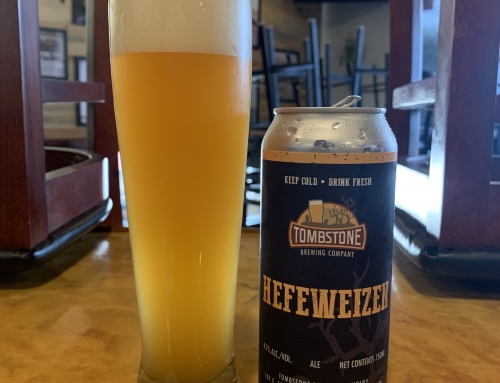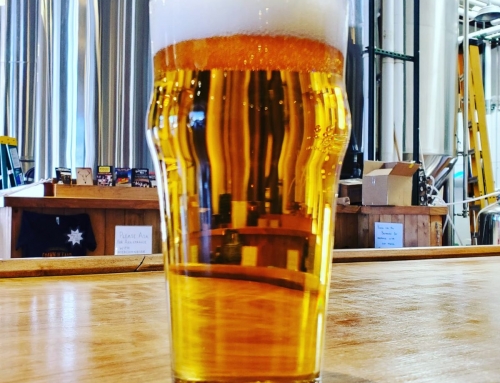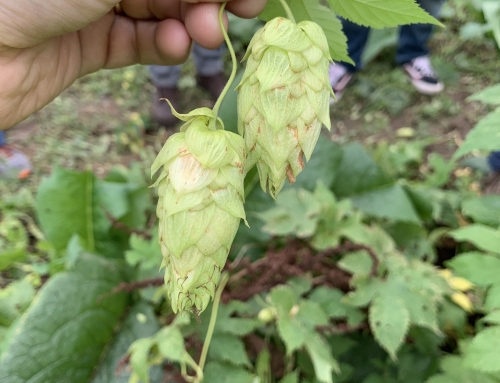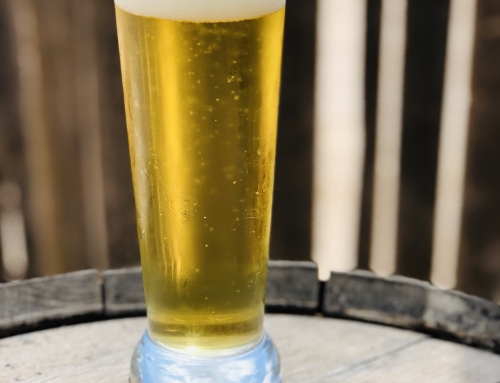First of all, I want to give a big thank you to everyone that has signed up so far! We’re off to a really good start and with the interest we’ve had, we’re starting to get a better picture of just how big we can make this. Today we went ahead and ordered two 40′ refrigerated shipping containers that we are going to use as our first barrel facilities! In each one, we should be able to house at least 75 barrels easily and with a little bit of modification, we could stretch that up to 105 barrels. It is going to be a long time before we have a need for 210 barrels, but we wanted to have two of them so that we can keep our funky beers separate from the clean beers.
Probably the most asked questions have been about what beers will be released through our barrel society program. The reason we haven’t released an official list is because we want to remain flexible. Every day we are looking for more sources for barrels and certain types of barrels are unpredictable in their availability. If a rare type of barrel pops up for purchase, there is a good chance that we will be buying it even if we don’t necessarily have a beer planned for it. As a result, we don’t want to release a definite list of beers and then find a more exciting type of barrel randomly become available without the flexibility in the production schedule to buy it. Our goal is to always find the absolute best barrels and if something super awesome comes available, I would hate to miss the opportunity to use it because we are committed to a predetermined list of promised beers.
That said, there are a few beers that we will definitely release that we can go ahead and disclose. The first beers that will be released to the Barrel Society will be an English Barleywine aged in Port, Red Wine, Woodford Bourbon, and Woodford Rye Whiskey barrels. We will also have our Imperial Stout with Piloncillo aged in Woodford Rye Barrels. These will all be ready in about 2 months and will be released to everyone that signed up for the Basic Membership. Each of these initial variants will be just about guaranteed to have extras after the allocations, so barrel society members will have 3 months of exclusive access to the extra bottles.
For our Funky Bunch members, we have between 3 and 6 months for the first allocations to be ready and the first release will include a Sour Wheat aged in toasted oak with Mango and Sour Cherries. We also have a 100% Brett fermented beer using a proprietary Brett Blend that gives intense pineapple and stone fruit flavor. That beer is now aging in Sauternes, Chardonnay, Toasted Oak, and Charred Oak barrels. We are also working on setting up a small yeast lab (in my home office!) where I will be able to propagate wild yeast strains and bacteria for the Funky Bunch. One idea I have is to cultivate yeast from the world’s largest rose bush, which just happens to be in full bloom right around the corner from the brewery, and use it in a fruited sour.
For the top tier of membership, I’ll be picking my favorite barrel from the barleywine variants and transferring that barrel into a second barrel of the same type. It is likely to be one of the Woodford Rye barrels. That barrel will age for just one month to take on more of the flavor of the whiskey before being transferred to a 3rd barrel which will be an unused, charred oak barrel where it will age for 3-6 months. If a triple barrel aged barleywine isn’t exciting enough for you, one of the beers that is planned (and not yet brewed) will go through a similar process. It will be a HUGE imperial stout that will never touch stainless steel after the boil. It will be fermented entirely in new toasted oak barrels where it will ferment for 3-4 days before being transferred into a variety of barrels (including, but not limited to: French Apple Brandy, Bourbon, and Armagnac) for extended aging. Once again, I will select my favorite barrel and transfer into a second one of the same before transferring into a charred oak barrel… a quadruple barrel aged Imperial Stout.
While all of the transferring of barrels will be a lot of work, I believe it is going to be well worth the trouble. I got the idea about a year ago when I was working on a presentation about advanced dry hopping techniques which included a theory I’ve had about how to achieve the “complete” aroma of hops. That theory is based on the fact that every hop addition that you do has a trade off. The basic thought is that kettle hop additions destroy certain compounds in order to create other compounds and that the lost compounds can be reintroduced to a beer with post-boil additions and pure hop oils. Then when a beer is dry hopped during fermentation you get some bio-transformation of hop compounds meaning once again, the compounds that were transformed are lost and can be reintroduced at a later point in the process and then when serving beer, hops can be infused to capture the most volatile of compounds that would never survive the conditioning time frame, thus achieving and maximizing every possible hop flavor compound being present in the glass.
Around that time, I was working hard on planning the barrel regimen that we will be using and I started thinking that the same principles could be applied to the barrel aging process to create the “complete” barrel flavor. My thought was that the first barrel being used for primary fermentation would lend a very low level of barrel flavor that would mostly be vanillans and a lightly smoky phenolic character. More important than the flavor of the barrel itself though, the yeast will behave differently in a barrel fermenter due to the different dimensions and the micro-oxygenation that occurs. I’ve often thought about how almost every brewery in the United States uses the same basic fermenter design and how differentiation can be achieved by changing the shape and size. In a barrel, there will be very little pressure put on the yeast and as a result, the esters produced will be of much greater intensity than in cylindro-conical fermenter. In addition, the yeast will produce more glycogens which will act to enhance he creaminess of the mouthfeel and create a fullness that can’t be achieved in stainless steel.
The next barrels being spirit and wine barrels will impart a lot of flavor of the spirits themselves, but some of the flavor will have already been “taken” from the barrel, so the final conditioning barrel is an unused barrel that will bring back those lost compounds. In a new barrel, the amount of barrel flavor is very intense and with all the enzymes in beer, it only takes 3-6 months to impart all of the character of the barrel. Since we will have already taken flavor compounds from a toasted oak barrel during primary fermentation, we will use the charred oak to achieve a greater depth of flavor and we will be able to specify the level of char with our cooperage to match the flavors that we want to pair with the individual beer.
This is all super exciting for us and the daydreaming about what we can produce for our barrel society members is non-stop these days.





Leave A Comment